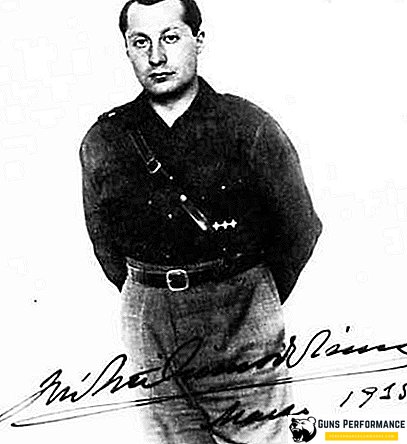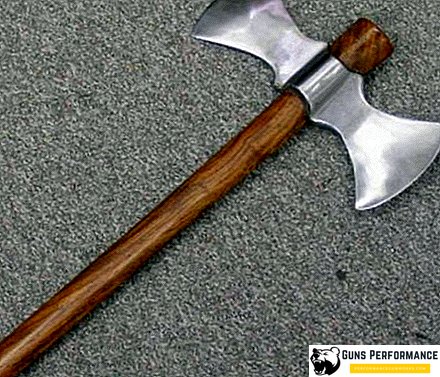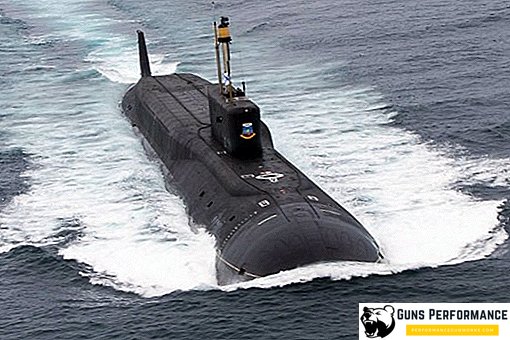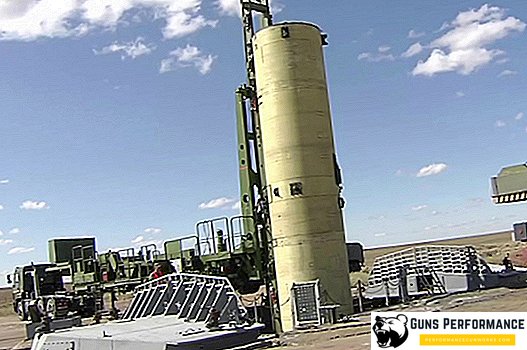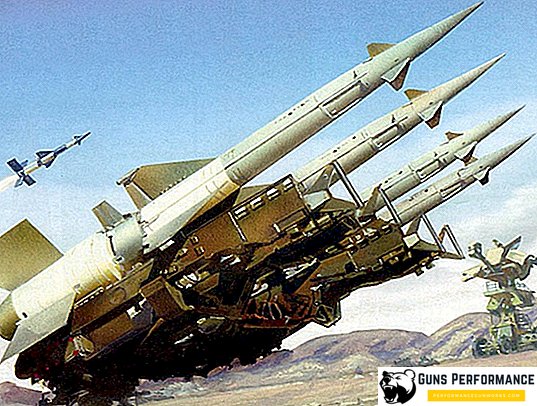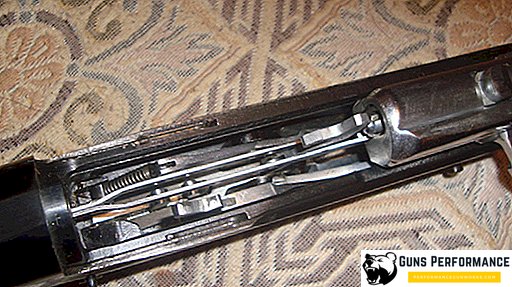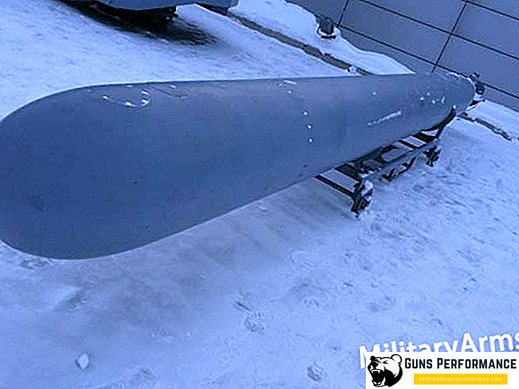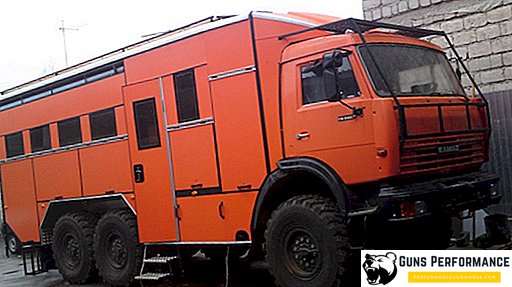GAZ-51 - Soviet-made car, which was produced in the period from 1946 to 1975. Transport replaced the legendary "lorry", whose carrying capacity was not enough in the postwar years. The 51st model was carrying loads weighing up to 2 500 kg.
The first prototype of the GAZ-51 was prepared before the start of the Second World War. Further development stopped due to the crisis in the Union. It was resumed only in 1946, at the same time they started mass production. In 1955, the classic version gave way to the championship 51A, on the basis of which a fire truck and a passenger bus were developed in the future. Over 29 years, a little less than 3.5 million copies of all varieties rolled off the assembly line.
The history of the GAZ-51

The development of a new product at the Gorky Automobile Plant began in early 1937. At the direction of the country's leadership, a machine was required with a simple design consisting of innovative and most reliable technical units.
Preparation of the necessary documentation lasted a little less than one and a half years. In June 1938, engineers began assembling the first units. Of these, in January 1939, they began to design a prototype. The first finished car was shown to the plant managers in the spring of the same year. The distinctive features of the new design are the new cabin and cladding. Before the war, the dump truck had time to appear at the All-Union Agricultural Exhibition as a promising project.
For 10 months, field testing took place. Cars tested in a variety of conditions, and then came to the conclusion about its suitability. From the beginning of 1941, they planned to launch a large-scale production, but the beginning of the Second World War forced to postpone a new product in the back office. During the years of hostilities, many technical units included in the GAZ-51 device were used in other designs.
By 1943, the Union had recovered from the crushing attack of the enemy, as a result of which work on the 51st model was resumed. For two years, progress has made a big step forward, so I had to make major changes to the design of the machine. From the old left only the name. Engineers replaced everything: engine, carburetor, hodovka device, GAZ-51 power take-off and much more.
In the first two years of the war, designers gained a lot of experience, which allowed them to modernize the structure of the power plant, increasing power. The classic braking system was replaced by hydraulic-type mechanisms. The shape of the cabin was changed, making it more comfortable and spacious. Tires got bigger size. The weight of the dump truck was reduced, at the same time increasing the maximum carrying capacity to 2.5 tons.
In 1944, two prototypes left the walls of the plant, which were sent to field testing. After them eliminated all the identified defects. The final serial cars collected next year. Their high quality has satisfied the first persons of the state, therefore they have begun immediate preparations for mass production.
GAZ-51 design

GAZ-51 specifications:
- Length - 5.7 m;
- Width - 2.3 m;
- Height - 2.1 m;
- Ground clearance - 24.5 cm;
- Wheelbase - 3.3 m;
- Weight - 2.7 tons;
- Engine capacity - 3,485 l;
- Power - 70 hp at 2.8 thousand revolutions;
- The greatest torque - 205 Nm at 1,5 thousand revolutions;
- The highest speed - 70 km / h;
- Gas tank - 90 l;
- Tires - 7.50-20.
Engine GAZ-51

For many years, the Gorky Automobile Plant had a license to assemble the American Dodge engine. By the beginning of the creation of the GAZ-51 truck, it was already very outdated (created in 1928) and demanded serious improvement, which was what the Russian specialists were doing. Piston rings to increase the strength of steel coated with a thin chrome layer. Cylinder liners were made of cast iron, created by the unique formulas of domestic scientists. Also, the design of the engine supplemented with oil cooler and preheater.
Babbit "fill" the crankshaft replaced steel-Babbit liners. Despite the large volume of the power plant, the compression ratio remained low - no more than 6.2. Thanks to this, drivers could refuse the recommended fuel and use low-quality fuel, including kerosene. Traction characteristics were appreciated by the military, as they were enough to overcome off-road. Used to start the starter or crank.
Developed 70 horsepower with a volume of 3,485 liters, the motor had a serious drawback. There was no overdrive, which excluded the possibility of working with serious loads. The oil supply system was designed for low and medium. If the driver violated the operating conditions developed by the company, the engine could fail. When traveling at a speed of more than 70 km / h, babbitt smelting began from the crankshaft bearings.
Chassis

The chassis is based on two channel spars of the channel type, constituting a wheelbase of 3.3 m in length. The special positioning of the engine and the forward shift of the cab were successful solutions. This allowed us to leave more "useful" space. The total length is 5.7 m. Moreover, modern mechanics, who managed to find a copy of the GAZ-51, through tuning and installing unique body kits make the car longer.
The rear axle GAZ-51 had an innovative design for its time. He received 16 semi-axes GAZ-51 and 8 satellites. They were connected with washers made of steel of unusual composition. It was characterized as cyanated, phosphated, low carbon. Drivers were required to monitor their condition. The failure resulted in serious damage, so it was always necessary to carry out timely replacement.
The whole design of the GAZ-51 onboard had a drawback: in each part there were several parts that had an increased load. This could include brake components (they were not designed for the mass of cars), a dedicated compartment for the oil pump, a carburetor, and much more. Such parts are easily replaced with new ones even in field conditions. If the driver carefully followed the transport, his life could reach 40-50 years.
The frame was tough. To increase its strength, its rear end was equipped with a cruciform crossbar. The frame device was well connected with both spars. It included unloading braces. Under the wings on the frame secured towing device.
Suspension and transmission

Dependent suspension made in accordance with the technical requirements of the 50s of the last century. Military and economic specimens received four longitudinal semi-elliptical springs. Rear axle supplemented by two spressory. Such a device has received the product of the latest generation of the Gorky Automobile Plant - Gazon Next.
To increase comfort when moving, the front axle of the dump truck was equipped with hydraulic lever double-acting shock absorbers. To ensure good stability on the roads (it was necessary with such a weight) supplemented hodovka heavy pivot and steering knuckle. The bus and other modifications worked on two drive shafts.
Dry adhesion did not have high strength, but was easily repaired by improvised means. Gearbox GAZ-51 had four gears - three front and one rear. To increase the working resource reserve and save materials, the GAZ-51 gearbox was deprived of synchronizers. The shift lever was in the floor. GUR was absent in military and civilian vehicles.
Species GAZ-51
On the basis of the standard version, engineers have released a lot of modifications, including military vehicles, a bus, a fire engine:
- 63 - all-wheel drive truck, consisting of two axles. Carried goods weighing up to 2 thousand kilograms. Shedding tires with acceptable power ensured high throughput;
- 93 - cars developed for the construction industry, carrying capacity - 2 250 kg (in fact, transported more goods). The chassis was shortened by 32 cm;
- 51N - improved machine for the military, received a cabin from the 63rd model. The carburetor was reworked, benches were installed along the sides for transporting soldiers, and the fuel tank capacity was increased to 105 liters;
- 51U - standard car for delivery to countries with moderate weather conditions;
- 51NU is an export version of the army variety for areas with a temperate climate;
- 51B - differed in fuel consumed - used compressed natural or coke oven gas (no carburetor was available). Over 11 years of assembly, several limited editions have been released;
- 51Ж - instead of the usual gasoline truck consumed liquefied petroleum gas;
- 51JU - export version of the model with the index "Ж";
- 51A - improved standard car. The main difference was in the body - it became larger in size;
- 51F - dump truck with increased capacity up to 80 horsepower. The ignition system was remade to pre-chamber and flare;
- 51AU - a modernized version, supplied to countries with a temperate climate;
- 51Y - car for tropical countries;
- 51С - a variant received an additional gas tank of 105 liters;
- 51СЭ - similar to the previous version with shielded electrical equipment;
- 51P - bus with folding seats. In the tailgate, the designers built in a semblance of a door and a comfortable staircase;
- 51RU - a bus exported to countries with moderate climatic conditions;
- 51Т - cargo taxi;
- 51P - tractor saddle type;
- 51PU - version "P", supplied to countries with a temperate climate;
- 51PY - modification "P", exported to tropical countries;
- 51B - a machine produced for delivery to allied countries with an increased carrying capacity of up to 3,500 kg. The new power unit (78 hp) worked with a modernized carburetor. Mounted rear axle with GAZ-63;
- 51D - chassis with a shortened frame, which was used to install various superstructures;
- 51DU - "D" for delivery to countries with a temperate climate;
- 51DYu - "D", exported to tropical areas;
- 41 - a prototype semi-tracked transport.
Each species has its own rich history.
History of mass production and export of GAZ-51
Mass production

The first series came off the assembly line in 1945. Consisted of 20 copies. They were sent to the testing ground. In 1946, even before their graduation, the company supplied more than 3,000 GAZ-51 to various industries. Transport easily passed all the tasks, the experts described it as reliable with a simple design and maintainability.
The car has received wide demand in the army and in agriculture. The main advantage over all competitors was reduced fuel consumption (less by 28-36%). In 1947, the design team of the Gorky Automobile Plant was awarded the Stalin Prize.
Due to high interest, GAZ could not cope with the production plan. In 1950, part of the orders "transferred" to the Irkutsk enterprise. Two years were engaged in assembly, as the workshops were not equipped with the necessary equipment in sufficient quantities. In 1948, the Odessa car assembly plant was connected. He was engaged in the release of the 51st model and numerous modifications until 1975 (until the complete abandonment of outdated technology).
The largest release was reached in 1958 - more than 173,000 copies. High quality and great interest confirms the release date - 29 years. Last car collected in April 1975. She was placed in the museum of the Gorky enterprise. Total engineers managed to collect a little less than 3.5 million trucks, including all modifications. 11.4 thousand units of transport left the workshops of the Irkutsk plant. In the early 50s, the leadership of the Union sold a license to manufacture Poland. The technique was produced under the name Lublin-51 until 1959. Over 8 years, designers have produced 17.4 thousand copies.
Export
The first model supplied to other states was 51U. It was positioned as one of the best cars in its class. Until the end of the 1960s, many cars were sent to African and Asian countries (official information on the exact number is not available). The variety with the carrying capacity increased up to 3 thousand kg had a high demand in the agricultural sphere of Hungary, the GDR and Finland. Some countries have bought a permit for the release of trucks on their territories.
What can be concluded?

GAZ-51 - the legend of the domestic engineering industry, which has made an invaluable contribution to the restoration of the USSR in the postwar years. The car turned out so high quality that it can be purchased today in the secondary market. Transport in good condition costs 100-250 thousand rubles. Copies that require repair will cost 20-100 thousand rubles.


